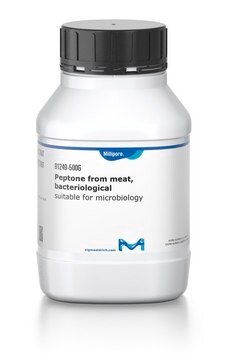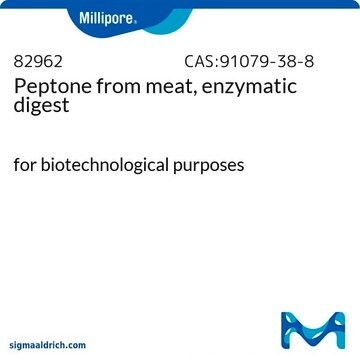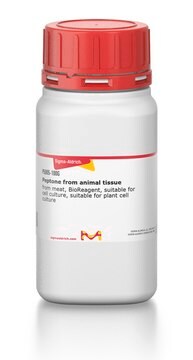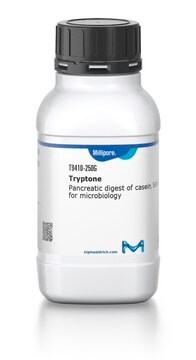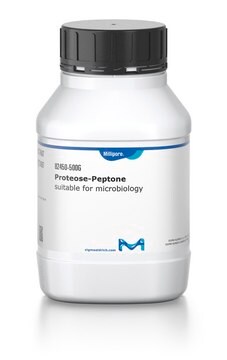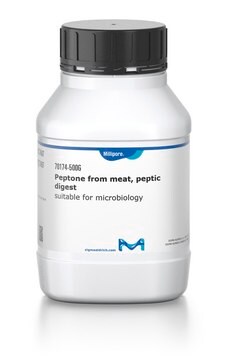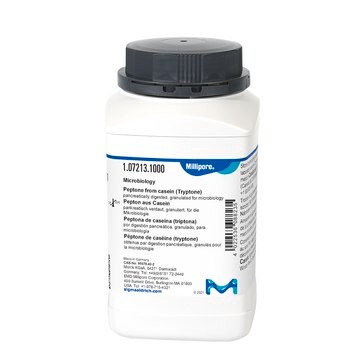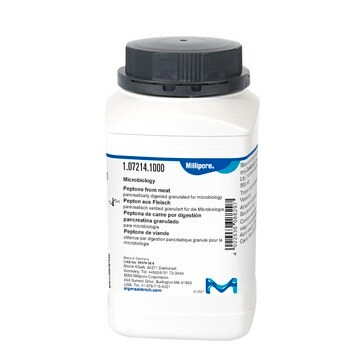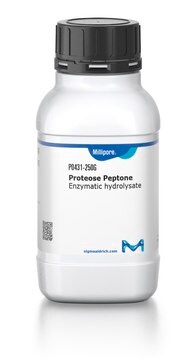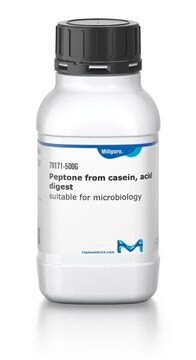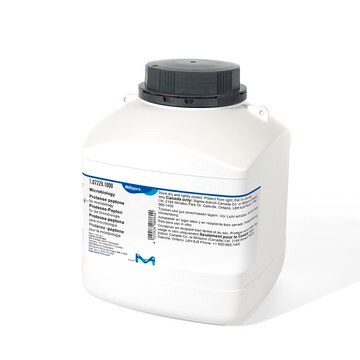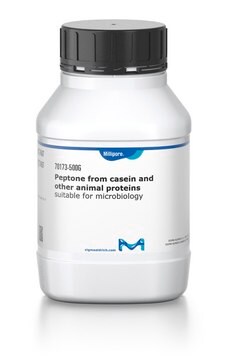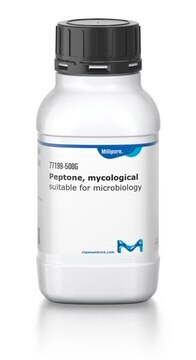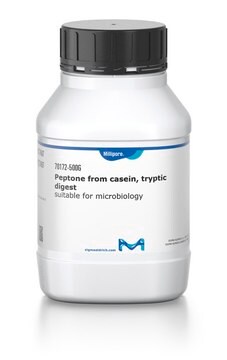70175
Pepton aus Fleisch, enzymatisch verdaut
suitable for microbiology
Synonym(e):
Pepton aus Rinderfleisch
About This Item
Empfohlene Produkte
Biologische Quelle
bovine skeletal muscle
Form
powder
Methode(n)
microbiological culture: suitable
Verunreinigungen
≥10% total nitrogen (N)
≥3% amino N
Glührückstand
≤12%
Verlust
≤6% loss on drying
pH-Wert
7.0±0.5 (25 °C, 2% in H2O)
Löslichkeit
H2O: 2%, clear, slightly yellow
Anwendung(en)
food and beverages
microbiology
Eignung
Clostridium spp.
Corynebacterium spp.
Salmonella spp.
Staphylococcus spp.
Suchen Sie nach ähnlichen Produkten? Aufrufen Leitfaden zum Produktvergleich
Allgemeine Beschreibung
Anwendung
- to culture Candida albicans
- to study its effects on canonical and non-canonical receptors of glucagon-like peptide 1 (GLP1) in human colon tissue in different ex vivo models
- as a component of the nutrient broth (NB) to study its efficacy against pathogen resistance in grapevine plants
Lagerklassenschlüssel
11 - Combustible Solids
WGK
WGK 3
Flammpunkt (°F)
Not applicable
Flammpunkt (°C)
Not applicable
Persönliche Schutzausrüstung
Eyeshields, Gloves, type N95 (US)
Hier finden Sie alle aktuellen Versionen:
Besitzen Sie dieses Produkt bereits?
In der Dokumentenbibliothek finden Sie die Dokumentation zu den Produkten, die Sie kürzlich erworben haben.
Kunden haben sich ebenfalls angesehen
Unser Team von Wissenschaftlern verfügt über Erfahrung in allen Forschungsbereichen einschließlich Life Science, Materialwissenschaften, chemischer Synthese, Chromatographie, Analytik und vielen mehr..
Setzen Sie sich mit dem technischen Dienst in Verbindung.